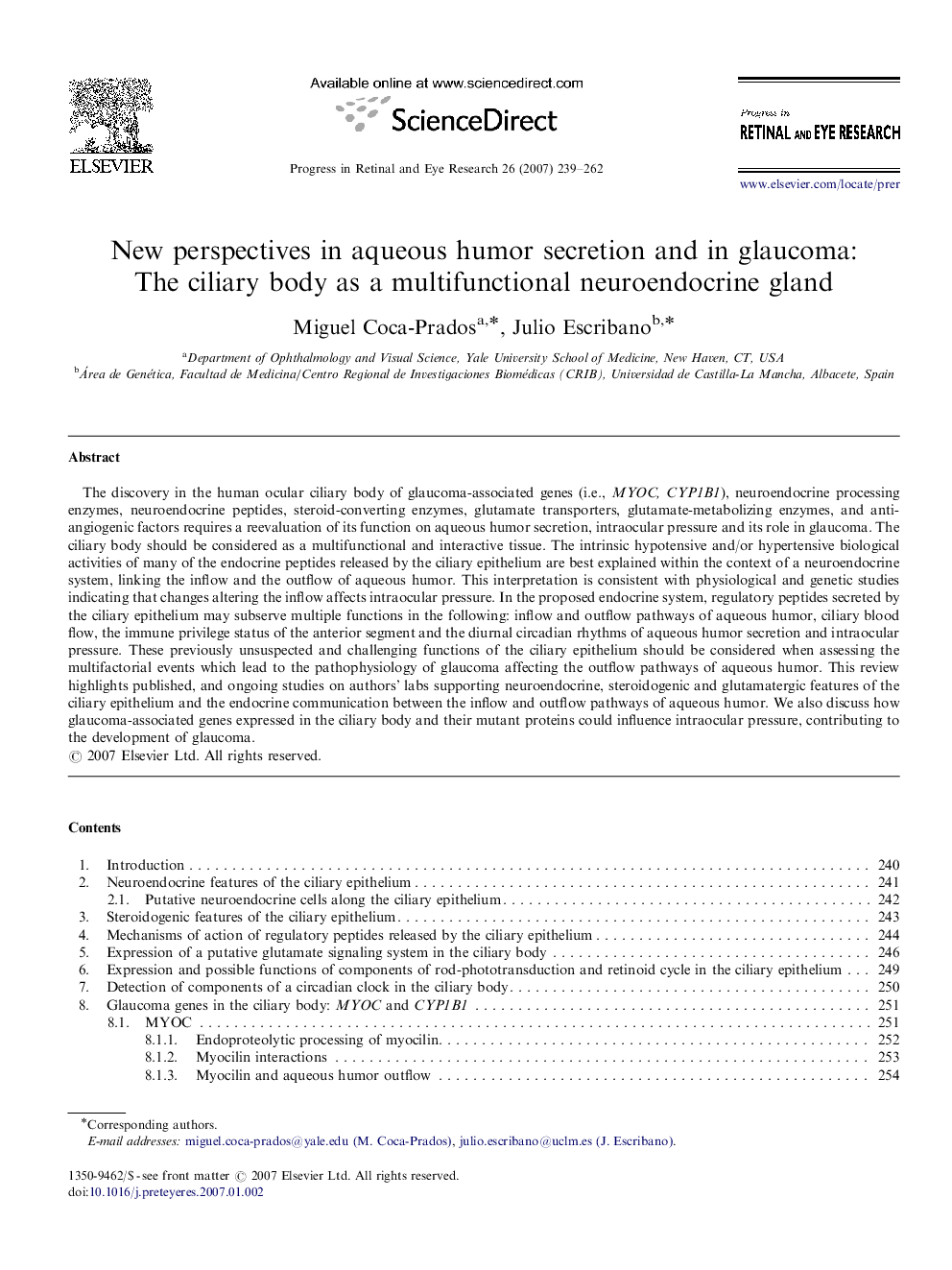| Article ID | Journal | Published Year | Pages | File Type |
|---|---|---|---|---|
| 4032137 | Progress in Retinal and Eye Research | 2007 | 24 Pages |
The discovery in the human ocular ciliary body of glaucoma-associated genes (i.e., MYOC, CYP1B1), neuroendocrine processing enzymes, neuroendocrine peptides, steroid-converting enzymes, glutamate transporters, glutamate-metabolizing enzymes, and anti-angiogenic factors requires a reevaluation of its function on aqueous humor secretion, intraocular pressure and its role in glaucoma. The ciliary body should be considered as a multifunctional and interactive tissue. The intrinsic hypotensive and/or hypertensive biological activities of many of the endocrine peptides released by the ciliary epithelium are best explained within the context of a neuroendocrine system, linking the inflow and the outflow of aqueous humor. This interpretation is consistent with physiological and genetic studies indicating that changes altering the inflow affects intraocular pressure. In the proposed endocrine system, regulatory peptides secreted by the ciliary epithelium may subserve multiple functions in the following: inflow and outflow pathways of aqueous humor, ciliary blood flow, the immune privilege status of the anterior segment and the diurnal circadian rhythms of aqueous humor secretion and intraocular pressure. These previously unsuspected and challenging functions of the ciliary epithelium should be considered when assessing the multifactorial events which lead to the pathophysiology of glaucoma affecting the outflow pathways of aqueous humor. This review highlights published, and ongoing studies on authors’ labs supporting neuroendocrine, steroidogenic and glutamatergic features of the ciliary epithelium and the endocrine communication between the inflow and outflow pathways of aqueous humor. We also discuss how glaucoma-associated genes expressed in the ciliary body and their mutant proteins could influence intraocular pressure, contributing to the development of glaucoma.
